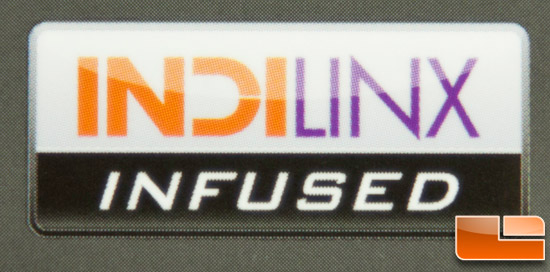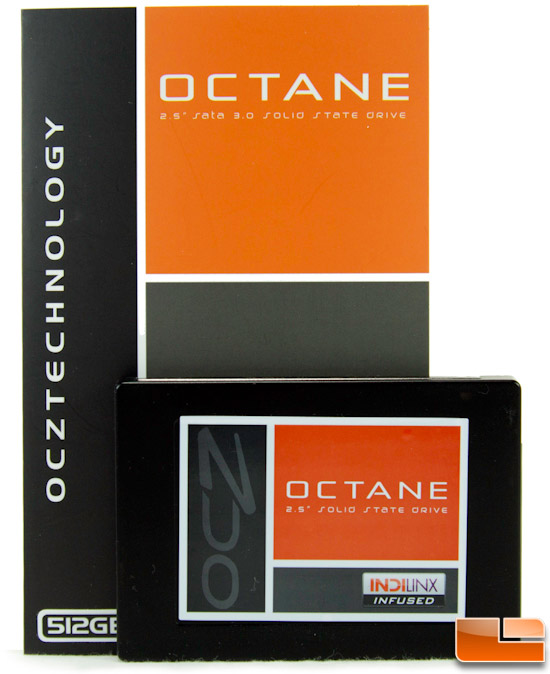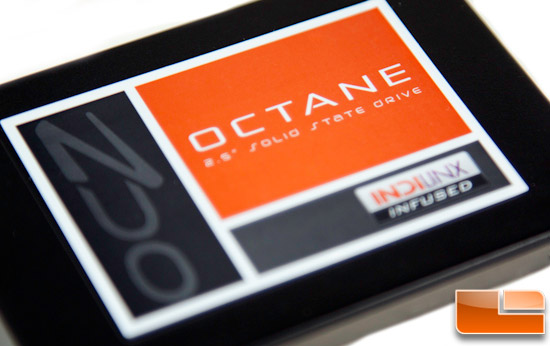OCZ Octane 512GB Indilinx SSD Review
Final Thoughts & Conclusions
Once you do the conversion from bytes to GiB (1,073,741,824 bytes per) Windows shows the total capacity available to the user on the OCZ Octane 512GB drive to be 476GB. The overprovisioned space was not disclosed but on the typical modern SSD see about 7-10% so that probably holds true here.

It’s interesting to see how OCZ is marketing these new drives. They are ‘Indilinx infused’ vesrus ‘SandForce driven’. Indilinx drives have nDurance technology while SandForce has DuraClass technology. I can’t help but be reminded of the movie Coming To America where Cleo McDowell comments on his feud with McDonald’s: “Look… me and the McDonald’s people got this little misunderstanding. See, they’re McDonald’s… I’m McDowell’s. They got the Golden Arches, mine is the Golden Arcs. They got the Big Mac, I got the Big Mick. We both got two all-beef patties, special sauce, lettuce, cheese, pickles and onions, but their buns have sesame seeds. My buns have no seeds.“
Humor aside, there are a slew of SandForce drives on the market today but now OCZ has breathed new life into the Indilinx brand and are back to see if they can regain the preeminence they once briefly had. Although that may be tough in terms of units sold if OCZ is the sole manufacturer/reseller of Indilinx based drives. To OCZ’s benefit, SandForce has had a few bumps in the road and there may be those that have been awaiting another alternative. Then again, customers may be gun-shy about a new and unproven (in terms of widespread consumer use) SSD while the original SandForce drives are getting long in the tooth and we are getting an idea of how they fare over time. There are certainly no shortage of people skeptical about the reliability of SSDs in general.

In terms of performance, things need to be put into perspective a bit. If you look at the raw numbers alone, SandForce drives seem to be faster as their top speeds are indeed greater – especially in writes. However, that’s only in the perfect setting with highly compressible data being sequentially written. Not the type of usage that typical consumer PC is going to see so those scores carry less weight when factoring overall performance. Where the SandForce drives rely on real-time compression of data to achieve maximum throughputs, the Indilinx controlled Octane has no such mechanism so has more consistent performance, regardless of the data type. As such, the user experience is going to be very similar. When compared to the top Marvell drives (Intel 510 Series and Crucial M4/Micron C400), the benchmark scores we saw were very similar as well since the Marvell controller does not employ compression either. Intel is due for a refresh of their own high-end controller so no one is going to be able to become complacent with the products they have.

As far as pricing goes we mentioned that this particular drive (512GB) is set for $879.99 MSRP which is right at $1.84 per usable GB mark. Not a bad price even though the $880 can buy you a whole new PC. No word on the 1TB pricing but the 256GB version can be found online now for $379.99. The smallest drive of 128GB will debut at $199.99 MSRP. OCZ offers a 3 year warranty on the drives which seems to be the industry standard anymore. What remains to be seen from the Indilinx Everest drives is how they fare over the long run. Based on our tests, TRIM works as expected and garbage collection does its thing in the background and does not appear to be overly aggressive. So far our experience has be very positive and we plan on using the drive in a 24/7 machine to really give it a long evaluation. Honestly, it’s refreshing to work on a drive that isn’t SandForce based and we welcome the change. Competition breeds excellence as they say so the fact that the Everest controller came out of its corner swinging is good for all of us. Givent that OCZ is offering two flavors of the drive – the Octane S2 with SATA II and slower NAND and the Octane with SATA III and faster NAND will mean that they’ll be able to effectively compete with the higher-end enthusiast drives as well as the more value oriented drives. Overall, we have no complaints although we’d like to see the 4k writes comes up a bit as they tend to be lower than that of its peers. A firmware tweak could probably remedy that and OCZ has never been shy about updates to their drives. Speaking of firmware, the current OCZ toolbox app doesn’t work with the drive but a new version should be out shortly.

We applaud OCZ for taking intelligent risks – something that has garnered them both praise and condemnation over the last few years. As mentioned, they were the first to step out on the ledge with Indilinx which ended up being huge for them and one of, if not the first to adopt the SandForce controllers. Again, huge. When they purchased Indilinx, many wondered if that purchase would make or break them and technically, the jury is still out. However, based on the initial results from the Octane drive, we’d say that it’s looking like a good move on their part and they’re positioned to be left standing when drive margins shrink to the point where attrition wipes out all but a few manufacturers. Until then, it’s going to be interesting to see how they all duke it out.
Legit Bottom Line: Now that OCZ has resurrected Indilinx with the Everest controller, the industry better take note because they’ve put together a splendid line of drives with Octane series and we get the feeling that they’re just getting warmed up.

Comments are closed.